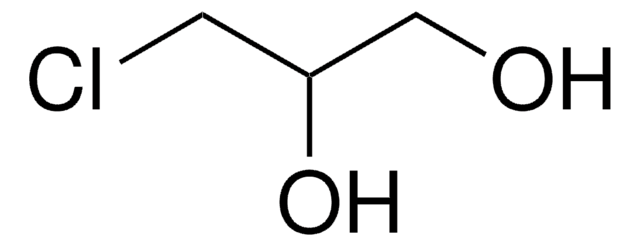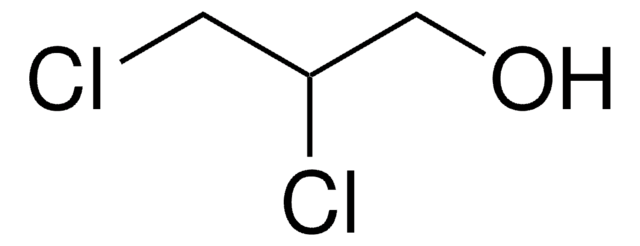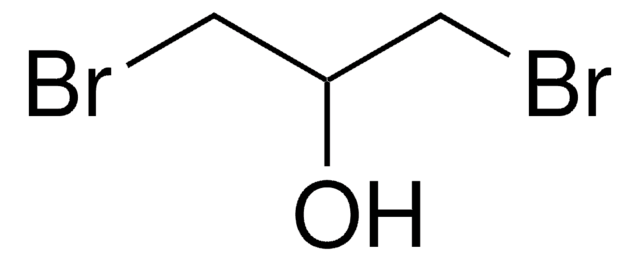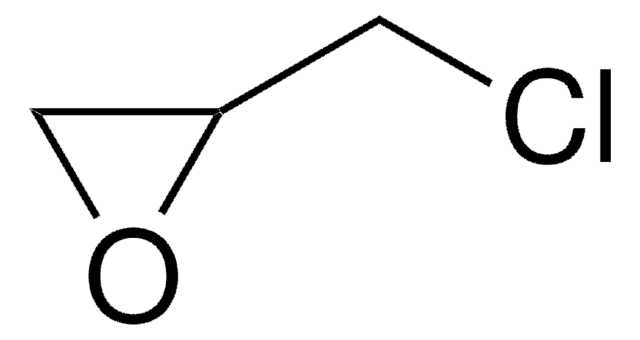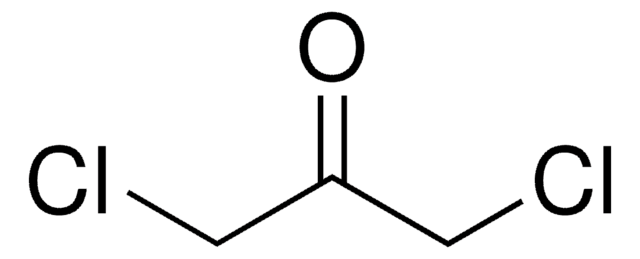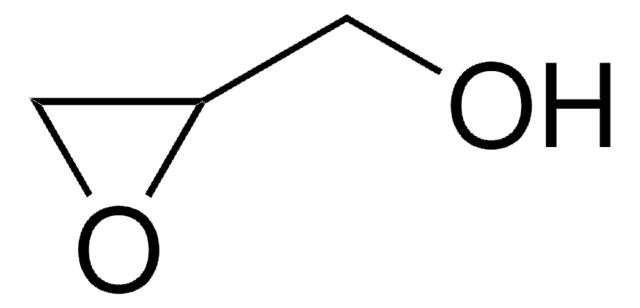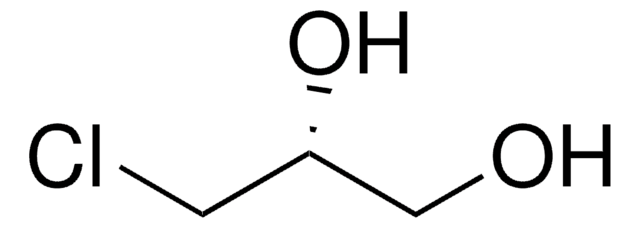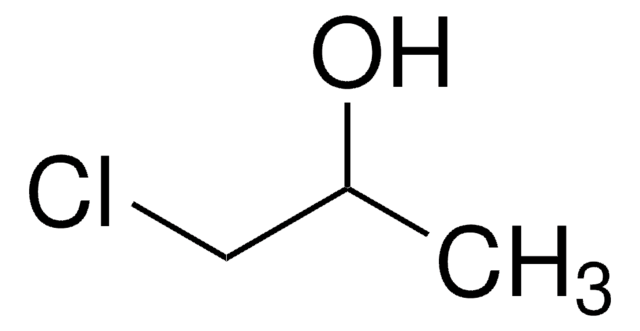추천 제품
Quality Level
분석
97%
양식
liquid
refractive index
n20/D 1.483 (lit.)
bp
174.3 °C (lit.)
mp
−4 °C (lit.)
solubility
water: soluble 10 part
alcohol: miscible
diethyl ether: miscible
density
1.363 g/mL at 20 °C
1.351 g/mL at 25 °C (lit.)
작용기
chloro
hydroxyl
SMILES string
OC(CCl)CCl
InChI
1S/C3H6Cl2O/c4-1-3(6)2-5/h3,6H,1-2H2
InChI key
DEWLEGDTCGBNGU-UHFFFAOYSA-N
유사한 제품을 찾으십니까? 방문 제품 비교 안내
일반 설명
1,3-Dichloro-2-propanol is a food processing contaminant. Biotransformation of 1,3-dichloro-2-propanol to epichlorohydrin by the whole cells of recombinant Escherichia coli via resin-based in situ product removal has been investigated.
1,3-Dichloro-2-propanol is used as a pharmaceutical intermediate and solvent for paints, lacquers, and epoxy resins.
1,3-Dichloro-2-propanol is used as a pharmaceutical intermediate and solvent for paints, lacquers, and epoxy resins.
애플리케이션
1,3-Dichloro-2-propanol can be used as a reactant to synthesize:
It can also be used as an intermediate in the production of epoxy resins, as well as a solvent for hard resins and nitrocellulose.
- Hydroxyl-N-tosylcyclams via sodium ethoxide catalyzed cyclization reaction with di(poly)-N-tosylamides.
- (R)-Epichlorohydrin using biocatalysts.
- 1,3-dichloropropene, a soil fumigant, and synthetic glycerol.
It can also be used as an intermediate in the production of epoxy resins, as well as a solvent for hard resins and nitrocellulose.
신호어
Danger
유해 및 위험 성명서
Hazard Classifications
Acute Tox. 3 Oral - Acute Tox. 4 Dermal - Carc. 1B
Storage Class Code
6.1A - Combustible acute toxic Cat. 1 and 2 / very toxic hazardous materials
WGK
WGK 3
Flash Point (°F)
186.8 °F - closed cup
Flash Point (°C)
86 °C - closed cup
개인 보호 장비
Eyeshields, Faceshields, Gloves, type ABEK (EN14387) respirator filter
이미 열람한 고객
Role of mitogen-activated protein kinases and nuclear factor-kappa B in 1, 3-dichloro-2-propanol-induced hepatic injury
Lee In-Chul, et al.
Laboratory Animal Research, 32(1), 24-33 (2016)
Soy-based adhesives with 1, 3-dichloro-2-propanol as a curing agent
Rogers J, et al.
Wood and Fiber Science, 36(2), 186-194 (2004)
Shu-Ping Zou et al.
Biotechnology letters, 35(6), 937-942 (2013-02-23)
Biotransformation of 1,3-dichloro-2-propanol (DCP) to epichlorohydrin (ECH) by the whole cells of recombinant Escherichia coli expressing halohydrin dehalogenase was limited by product inhibition. To solve this problem and improve the ECH yield, a biotransformation strategy using resin-based in situ product
M D Nikolaki et al.
Journal of hazardous materials, 137(2), 1189-1196 (2006-05-19)
The photocatalytic oxidation of 1,3-dichloro-2-propanol (1,3-DCP) was studied by following the target compound degradation, the total organic carbon removal rate and by identifying the oxidation products. The reaction was performed in a batch recycle reactor, at room temperature, using UV
C Crews et al.
Food additives and contaminants, 20(10), 916-922 (2003-11-05)
The results of surveys to investigate the levels of 3-monochloropropane-1,2-diol (3-MCPD) and 1,3-dichloropropanol (1,3-DCP) in UK retail samples of soy sauces and similar products are reported. The products, sampled in 2000 and 2002, were analysed for 3-MCPD using an established
자사의 과학자팀은 생명 과학, 재료 과학, 화학 합성, 크로마토그래피, 분석 및 기타 많은 영역을 포함한 모든 과학 분야에 경험이 있습니다..
고객지원팀으로 연락바랍니다.